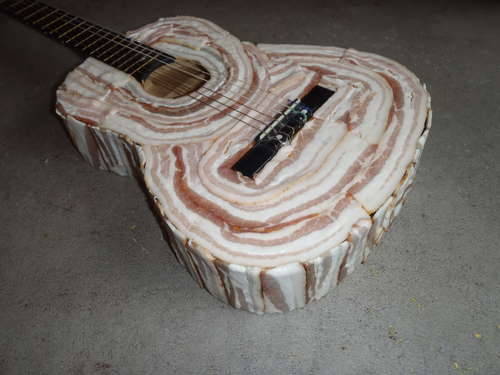Originally posted by xenophobe
View Post
Announcement
Collapse
No announcement yet.
Sharkfin falling
Collapse
X
-
-
Have also used the Dunlop 2 part cleaning system for years, but I mostly use Naptha these days. Fantastic cleaner, but yes, definitely step 1 in a 2 part process.
Sully
Comment
-
When you scrape the excess glue off the fingerboard place the razor blade at 90 degrees to the fingerboard an scrape do not try to get underneath it.
After you get the inlay even with the board just wipe off any glue dust and put a dab of lemon oil on and rub it in and wipe off.Really? well screw Mark Twain.
Comment
-
Wow Sully! Very informative I guess if I ever have this problem I know who to contact.Originally posted by sully View PostMaterials needed:
Water thin super glue
Applicator tip for the super glue (helps control the flow of it)
Glue accelerator
Razor blade
Optional: Paste Wax Q-tip
Steps:
Take the Q-tip and apply a small amount of paste wax on the fretboard around the inlay. This will keep the glue from seeping into the wood grain. You can skip this if you like, but it can be helpful. Anyway, put the applicator tip on the bottle of glue and get the tip right on the seam of the inlay and fretboard. Apply a small amount of glue on that seam; you’ll notice the water thin glue seeping down into that seam, which is what you want to happen. You don’t need a whole ton of glue in there, but enough to get around the areas where the original glue didn’t spread to. Once you’ve got enough in there (and you don’t need a ton), press the inlay back into place (you can use the side of the razor blade to hold it so you don’t stick your thumb to it), then spray the accelerator on it. The accelerator will cure the glue quickly, hence the name.
Now that you’ve got the inlay back in place, scrape the excess glue away. If the seam that you just wicked glue into isn’t flush with the fretboard, wick more glue in there, spray the accelerator, and scrape the excess until you’re flush and you have a smooth surface.
SullyThis is what I think of Gibson since 1993. I HATE BEING LEFT HANDED!
I HATE BEING LEFT HANDED!  I rock out to Baby metal because Wilkinsi said I can't listen to Rick Astley anymore.
I rock out to Baby metal because Wilkinsi said I can't listen to Rick Astley anymore.
Comment
-
It has been a long while, but i was only able to do this now, and went better than i expected, she will survive! I placed the super glue using a needle, to direct the glue to the right place, and it worked. The scraping went ok, only the 3rd fret inlay, my first try, got a bit messy, a small flood only . Then i used olive oil instead of the lemon oil, since it was already available around here.Thanks everyone, for your help.Gotta love this forum!
. Then i used olive oil instead of the lemon oil, since it was already available around here.Thanks everyone, for your help.Gotta love this forum!
Comment

Comment